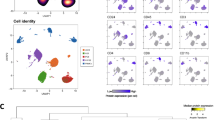Abstract
Bronchogenic carcinoma is the leading cause of cancer-related mortality, with the prognosis of pulmonary adenocarcinoma remaining poor in advancedstaged tumors despite improved efforts in earlier diagnosis and combination chemotherapy and radiation therapy. Understanding the potential mechanisms underlying the poor survival of these cancers will potentially lead to better therapeutics. One important area that has received significant attention, and with it a greater understanding is the role of apoptosis, or genetically encoded programmed cell death. Apoptosis is defined by distinct characteristic morphological and biochemical changes (1). In malignant cells, these physiological apoptotic pathways are often altered, resulting in a significant survival advantage for these cells (2). Tumors with developed resistance to apoptosis can survive despite an active immune system. The Fas receptor (APO-1 or CD95) and its ligand play a key role in the initiation of one apoptotic pathway in malignant tumor (3-5). Loss of the Fas protein has been reported to induce resistance to apoptosis, however, apoptotic resistance in some Fas-expressing malignant cells has also been reported (4,5). The Fas receptor is located in the cell surface of tumor cells, and loss of cell-surface Fas protein expression by dislocation of Fas protein is one of the essential mechanisms for tumor immune resistance (6,7). Because of the central roles of FACScan analysis and confocal microscopy in the evaluation of the cell surface Fas protein expression, this chapter focuses on the utilization of these tools in assessment of Fas in lung adenocarcinomas.
Access this chapter
Tax calculation will be finalised at checkout
Purchases are for personal use only
Similar content being viewed by others
References
Wyllie, A. H., Kerr, J. F. R., and Currie, A. R. (1980) Cell death: significance of apoptosis. Int. Rev. Cytol. 68, 251–306.
Thompson, C. B. (1995) Apoptosis in pathogenesis and genes and treatment of disease. Science 267, 1456–1461.
Nagata, S. and Goldstein, P. (1995) The Fas death factor. Science 267, 1449–1456.
Cheng, J., Zhou, T., Liu, C., Shapiro, J. P., Brauer, M. J., Keifer, M. C., et al. (1994) Protection from Fas-mediated apoptosis by a soluble form of the Fas molecule. Science 263, 1759–1762.
Cascino, I., Fiucci, G., Papoff, G., and Ruberti, G. (1995) Three functional soluble forms of the human apoptosis-inducing Fas molecule are produced by alternative splicing. J. Immunol. 154, 1157–1164.
Nambu, Y., Hughes, S. J., Rehemtulla, A., Hamstra, D., Orringer, M. B., and Beer, D. G. (1998) Lack of cell surface Fas/Apo-1 expression in pulmonary adenocarcinoma. J. Clin. Invest. 101, 1102–1110.
Hughes, S. J., Nambu, Y., Soldes, O. S., Hamstra, D., Rehemtulla, A., et al. (1997) Fas/APO-1 (CD95) is not translocated to the cell membrane in esophageal adenocarcinoma. Cancer Res. 57, 5571–5578.
Nicoletti, I., Mgliorati, G., Pagliacci, M. C., Grignani, F., and Riccadi, C. (1991) A rapid and simple method for measuring thymocyte apoptosis by propidium iodide staining and flow cytometry. J. Immunol. Methods 139, 271–279.
Darzynkiewicz, Z., Bruno, S., Del Bino, G., Gorczyca, W., Hotz, M. A., Lassota, P., and Traganos, F. (1992) Features of apoptotic cells measured by flow cytometry. Cytometry 13, 795–808.
Weller, M., Frei, K., Groscurth, P., Krammer, P. H., Yonekawa, Y., and Fontana, A. (1994) Anti-Fas/APO-1 antibody-mediated apoptosis of cultured human glioma cells. Induction and modulation of sensitivity by cytokines. J. Clin. Invest. 94, 954–964.
Chinnaiyan, A. M., O'Rourke, K., Tewari, M., and Dixit, V. M. (1995) FADD, a novel death domain-containing protein, interacts with the death domain of Fas and initiates apoptosis. Cell 81, 505–512.
Author information
Authors and Affiliations
Editor information
Editors and Affiliations
Rights and permissions
Copyright information
© 2003 Humana Press Inc., Totowa, NJ
About this protocol
Cite this protocol
Nambu, Y., Beer, D.G. (2003). Altered Surface Markers in Lung Cancer. In: Driscoll, B. (eds) Lung Cancer. Methods in Molecular Medicine™, vol 74. Humana Press, Totowa, NJ. https://doi.org/10.1385/1-59259-323-2:259
Download citation
DOI: https://doi.org/10.1385/1-59259-323-2:259
Publisher Name: Humana Press, Totowa, NJ
Print ISBN: 978-0-89603-985-8
Online ISBN: 978-1-59259-323-1
eBook Packages: Springer Protocols




